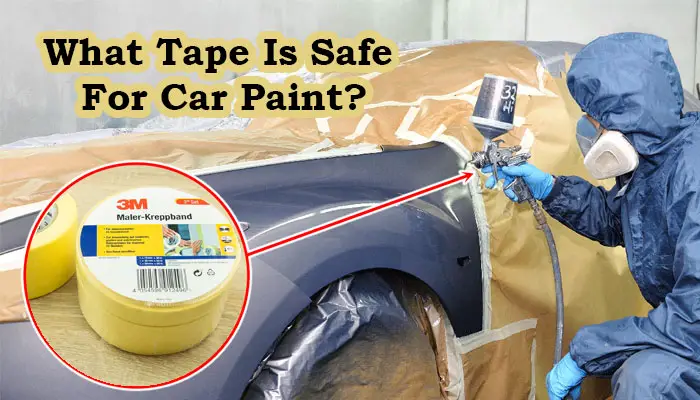Can a Car be Towed with the Emergency Brake On?
- By Infoik
- 09 Nov, 2021

Can a Car be Towed with the Emergency Brake On?


can a car be towed with the emergency brake on? This depends on whether the vehicle has a rear-wheel drive or a front-wheel drive and an automatic transmission. If your auto is equipped with either type of driving system, then yes – make sure that there are no other vehicles around when towing in reverse gear since this action will cause them all to stop abruptly!
When towing a car, it’s essential not only that the handbrake or parking brake is off but also, in most cases, if you have these on while driving, they will damage your vehicle. Expert advice states no one should tow with their emergency brakes applied because this could cause irreparable damages and make matters worse before they’re even resolved!
How Do You Tow A Car Without Damaging It?

You may have heard the question, “Can you tow a car with its emergency brakes on?” However, before we answer this question thoroughly, let’s take an overview of situations where we would recommend that drivers do not use their brake system.
The first case for avoiding potentially damaging your vehicle after towing is when parking or running errands in neutral gear instead of the park (or any other setting). If there are no jarring outside movements like traffic nearby and generally smooth roads ahead until reaching the destination, staying engaged while driving will help avoid wear-and-tear consequences caused by sudden stopping; however, if these conditions don’t apply, DON’T USE YOUR BRAKES!
Can you tow a car with an emergency brake on?

Chappelle’s Towing advises drivers to release their parking brake when the car is not in use. If you have your emergency brake on and try to tow a vehicle with two wheels off-street, chances are it won’t work out well for you! However, if someone is loading up an already-towed truck bed from underneath–as long as everything remains neutral, including brakes – no damage should be done, even though this technique may take longer than traditional methods do.
If your car is being towed and the emergency brake has not been applied, there should be no damage to it. If you’re using two non-driving wheels on a flatbed tow truck while having an auto transmission or manual gearbox for short distances with low speeds, then this should be okay as well, but only time will tell if something goes wrong; so, keep that mind in hand!
How to trucks tow cars in Park

If you find yourself with a car that needs to be towed, the first step is ensuring it’s in Park and not neutral. This will stop any wheels from turning, which could cause damage if they turn while being pulled by another vehicle or against an obstruction such as foliage on hillsides where there’s no room for error! Once again, consult your owner’s manual before choosing between different positions like flatbed vs. ball mount (known to break transmissions).
Different wheel drive considerations
4-wheel drive vehicles can be a challenge to tow. With all four wheels in contact with the ground, you must keep your vehicle’s transmission in 2-wheel or four-wheel drive high enough for traction so they don’t skip out on power while being towed at highway speeds. If this sounds like something familiar, then consider contacting Chappelle’s Towing today!
It can be hard to know which is the best way of getting your car towed, but if you contact an expert team, they will help provide a solution. Expert technicians are happy with any type or make – all they need from drivers like yourself is their license plate number and location so that another customer doesn’t get stuck trying to figure out where things go themselves!
Can you tow a car if the parking brake is on?
Parking brakes are used to stop your car when it is parked. It has many different names, such as a handbrake or even an emergency brake (e- brake). While this system may be helpful in emergencies like overheating problems with engines, for example, you should not tow any vehicle while the parking brake is on unless otherwise advised by professional technicians who know what they’re doing!
What gear should a car be in with the brake on?
If you happen to have your emergency brake on, it is not possible for anyone – even with the help of flat bars or two-wheeled tow trucks. The reason is that in this position (neutral), disengaging an engine reduces risk and damage potential during short-distance hauling.
How do you tow a car with the brake on?
What is the difference between parking brake and handbrake?
Can you tow a car without brakes?
Can you tow a car damage transmission while the parking brake is on?
You should never tow a car with its wheels in neutral unless it’s on the ground. If not, don’t put them there. You’ll avoid damage to transmission systems – particularly automatic transmissions, which can suffer more than conventional ones if they’re being shifted without using an emergency park gear by accident while driving around town or passing cars at high speed because of how sensitively these types operate under heavy load conditions. You can damage a car’s transmission system if you tow it even when there’s no parking brake on.
Can you tow a car with the emergency brake on?
The emergency brake can be set to tow a car, though you will have to unlock the front wheels for rear-wheel drive. You’ll only drag it up onto flatbeds or haulers when using your engine’s power and torque for free because of parking lot conditions that are too difficult with just one wheel attached at any point during the movement. The critical thing here again: Yes – even while operating on an Emergency Brake setting!
FAQ:
How do they tow a car with the e-brake on?
Towing a car with an automatic transmission can be extremely tricky. First, lift two wheels (front end or rear) and drag the other two to avoid getting damaged when getting towed. Still, suppose you have AWD drivetrains or high-performance tires on. In that case, there may not always be enough weight centered over them to prevent flat spots from developing because these types of vehicles are primarily designed for off-road use, which means their axles aren’t strong enough during regular street driving conditions!
Can you mess up your car by driving with the emergency brake on?
If you drive with the parking brake on for several miles, your drum or disc might warp. Suppose, they get overheated and start experiencing increased thermal expansion rates due to higher than average temperatures in the car afterward. In that case, this could cause their adhesives to fail, resulting in cracks along seams where linings are attached at pad connections points– leading them to separate from shoes completely!
What are the types of parking brakes?
The parking brake varies by type. The stick lever is attached to older cars and trucks, while newer models have a center console or seat where you’ll find these controls for your vehicle’s brakes behind them on either side near the passenger compartment floorboards.
Which is better for towing FWD or AWD?
Are cars towed from the front or back?
In general, two-wheel drive cars should be towed with their driven wheels off the ground. Therefore, all rear-drive vehicles require a hoist so that power from its engine cannot go through any transmission system components and damage them too much for repairs. On the other hand, front-wheel drives can benefit significantly by being raised high enough to transmit additional force into these delicate mechanisms. Still, front axle steering will not work correctly either if you do this driving while avoiding crunching or breaking anything else under your tires along the way!
Can a car be towed in the Park?
You’ll be surprised to know that you can tow all different kinds of vehicles in the Park. For instance, cars are just as easy to pull with your vehicle if it has four wheels and an engine! The best part is there’s no need for special equipment either -you won’t even have any trouble following behind another one while driving on these roads. Because they’re wide enough that way.
This means whenever you’re driving around and see some tow trucks, be aware of how important these little mechanisms are – especially if we can’t use common sense like never remembering ever leave our keys inside while unattended at night.
When the parking brake is engaged, and you want to tow your vehicle, make sure that it’s not in gear. If there are other people around who may witness this operation (e.g., neighbors), we recommend disengaging all of their wheel locks first before taking yours off as well!
Can you drive with a broken emergency brake?
What happens if you forget to release the handbrake?
Even if you never use your handbrake, it is essential to remember that sometimes we forget and wear out the emergency or backup brakes. There will only be one set left on our vehicle when this happens, which means they’ll do all of the work while we’re stopped in traffic – reducing how much time off-roaders have at their disposal!
If you’re having trouble with your car’s handbrakes, don’t hesitate. It may be a serious issue and require immediate attention. Whether they are totally ruined or only partly broken off can make all the difference in what needs fixing; we would recommend new pads for sure–but make certain before taking them off that everything works as it should avoid any complications when installing fresh ones!
Conclusion
Brakes are an essential part of every car’s function. If they aren’t working correctly, you mustn’t drive out with the vehicle! For this reason alone, it pays to take care of your brakes and have them inspected regularly by professionals who know what they’re doing.
We must tell our readers how best to use these devices; care for them when necessary, so that no damage will result from either human error (careless) or external factors like weather conditions- which often lead to malfunctions if left unaddressed!
Read another related content of our blog here.












